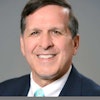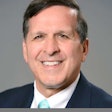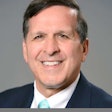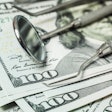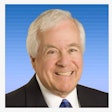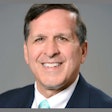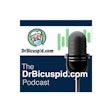As dental practices across the U.S. look to the fourth quarter of 2025, a complex picture emerges of an industry grappling with mounting operational pressures while trying to maintain quality patient care.
DrBicuspid.com recently launched a comprehensive survey to clinicians. Their answers reveal a profession caught between rising costs, staffing shortages, and patient spending concerns, forcing difficult decisions about fees, salaries, and practice sustainability.
The data paint a portrait of cautious optimism tempered by very real economic anxieties that are likely reshaping how dental practices operate and plan for the future.
The cost crunch: When everything gets more expensive
According to DrBicuspid readers, the most pressing concern keeping dental practice owners awake at night isn't patient demand or competition, it's the relentless rise in operational costs. A staggering 65% of respondents rated their worry about rising operational expenses at 4 or 5 on a 5-point scale, producing an average concern score of 3.76, the highest among all surveyed categories.
This finding isn't surprising when one considers what dental practices face daily. Costs continue to climb on everything from basic supplies like gloves and masks to high-tech imaging systems and digital workflow tools. Rent increases have outpaced inflation in many markets, and utility costs have surged alongside everything else. The ripple effects of supply chain disruptions that began during the pandemic continue to impact the pricing and availability of essential dental materials.
"We're seeing increases across the board," explains one practice owner from the survey. "Our lab fees are up, our supply costs are up, even our office rent went up 12% this year. At some point, those costs have to go somewhere."
That somewhere, increasingly, is patient fees. Nearly half of all respondents (46%) plan to raise their fees in the upcoming year, with an average planned increase of 6.77%. This represents a significant adjustment that reflects not only inflation and the rising cost of doing business but also the accumulated pressure of multiple years of increased prices from outside sources that many practices initially absorbed rather than passing along to patients.
How to negotiate dental insurance reimbursement fees
The staffing puzzle: Finding and keeping good people
If rising costs are dental practices' biggest worry, staffing challenges run a close second. Finding qualified team members rates as a major concern for 64% of respondents, with an average worry score of 3.80. That nearly matches operational cost concerns in intensity.
The dental staffing shortage isn't solely about numbers, it's about finding people with the right skills, attitude, and reliability that dental practices require. Dental hygienists, in particular, remain in short supply in many markets, while dental assistants with solid training and experience can command premium salaries that strain practice budgets.
Interestingly, while finding team members is extremely challenging, retaining current ones appears to be more manageable, with a concern score of 3.01. This finding suggests that once practices find good people, they're generally able to keep them, likely through competitive compensation and better working conditions.
Speaking of compensation, half of all survey respondents plan to give raises to team members this year, averaging 5.83%. This finding represents practices' recognition of the current competitive job market and that good team members are essential to a practice's success.
Podcast: Secrets to successful interviews for your dental practice
Patient economics: The spending squeeze
While dental professionals worry about their rising costs, they're equally concerned about their patients' ability to pay. In our survey, 42% of respondents rated their worry about patient spending habits at 4 or 5, with an average concern score of 3.08.
This anxiety reflects the economic pressures many American families face. While employment remains relatively strong, inflation has eroded purchasing power, and many patients are making tough choices about discretionary spending. Sadly, dental care often falls into that category for many people.
The concern about patient spending connects directly to broader economic uncertainty. About 32% of dental professionals expressed significant concern about the overall strength of the U.S. economy in late 2025, with an average concern score of 2.82. While this suggests more optimism than pessimism about the broader economy, it still represents substantial unease about macroeconomic conditions.
The insurance dilemma: Reimbursements under pressure
Adding to practices' financial pressures, 63% of respondents expressed significant worry about dental insurance reimbursement levels, rating their concern at 4 or 5 on the 5-point scale (mean score 3.73). This reflects a long-standing frustration in the dental industry, where insurance reimbursement rates have largely stagnated despite practice costs rising dramatically.
Many dental insurance plans still operate on fee schedules that haven't been meaningfully updated in years, creating a growing gap between what procedures actually cost to deliver and what insurance companies are willing to pay. This dichotomy forces practices into difficult decisions about whether to remain in-network with various insurance plans or move out of network or toward more fee-for-service models.
The insurance reimbursement squeeze also affects patient care decisions, as some patients may delay or decline recommended treatment when their out-of-pocket costs are higher than expected.
How dentists are reworking their schedules to increase profit margins
Competition and market dynamics: Moderate concerns
Despite all of the economic pressures, dental professionals expressed only moderate concern about traditional competitive threats. Worry about declining patient demand averages 3.15, while competition from corporate dentistry or expanding offices scores 2.88. Those numbers suggest that most practices feel reasonably confident about maintaining their patient base despite economic uncertainties.
This relative confidence in patient demand may reflect the essential nature of dental care and the relationship-based nature of dental practice, where patients often stick with providers they trust even during economic downturns.
Professional stress: The human cost
Combined, these economic pressures take a toll on the people running dental practices. Professional stress levels average 3.35 among survey respondents, indicating moderate but notable stress across the profession. When combined with worry about regulatory changes (averaging 2.89), it's clear that dental professionals are managing multiple sources of pressure simultaneously.
Got a hobby? What you do in your spare time may make you a better dentist
Looking forward: Adaptation and resilience
The survey data reveal a profession in transition, adapting to new economic realities while working to maintain the quality of care that patients expect. The combination of fee increases and staff raises suggests practices are making strategic investments in both revenue sustainability and human capital, betting that providing excellent service with well-compensated teams will help weather current economic storms.
As dental practices navigate these challenges, their success will likely depend on their ability to communicate value to patients, operate efficiently despite rising costs, and maintain the skilled teams that make quality dental care possible.
The fourth quarter of 2025 will test the resilience and adaptability that have long characterized successful dental practices across the U.S.



